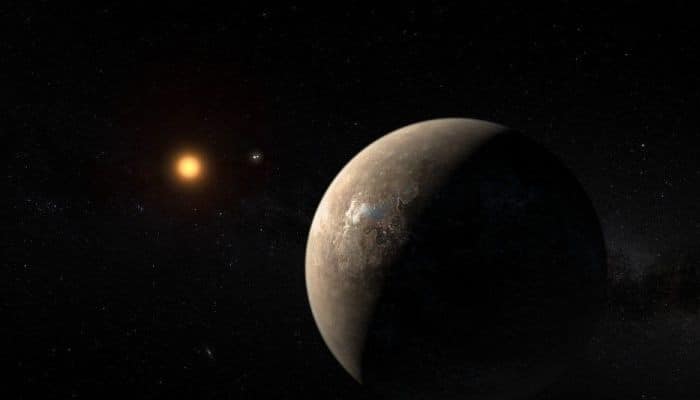Paris: Scientists on Wednesday announced the discovery of an Earth-sized planet orbiting the star nearest our Sun, opening up the glittering prospect of a habitable world that may one day be explored by robots.
Named Proxima b, the planet is in a "temperate" zone compatible with the presence of liquid water -- a key ingredient for life.
The findings, based on data collected over 16 years, were reported in the peer-reviewed journal Nature.
"We have finally succeeded in showing that a small-mass planet, most likely rocky, is orbiting the star closest to our solar system," said co-author Julien Morin, an astrophysicist at the University of Montpellier in southern France.
"Proxima b would probably be the first exoplanet visited by a probe made by humans," he told AFP.
An exoplanet is any planet outside our Solar System.
Lead author Guillem Anglada-Escude, an astronomer at Queen Mary University London, described the find as the "experience of a lifetime".
Working with European Southern Observatory telescopes in the north Chilean desert, his team used the so-called Doppler method to detect Proxima b and describe its properties.
The professional star-gazers spent 60 consecutive days earlier this year looking for signs of gravitational pull on its host star, Proxima Centauri.
Regular shifts in the star's light spectrum -- repeating every 11.2 days -- gave a tantalising clue.
They revealed that the star alternately moved towards and away from our Solar System at the pace of a leisurely stroll, about five kilometres (three miles) per hour.
After cross-checking an inconclusive 2000-2014 dataset and eliminating other possible causes, the researchers determined that the tug of an orbiting planet was responsible for this tiny to-and-fro.
"Statistically, there is no doubt," Anglada-Escude told journalists in a briefing.
"We have found a planet around Proxima Centauri."
Proxima b is a mere four light years from the Solar System, meaning that it is essentially in our back yard on the scale of our galaxy, the Milky Way.
It has a mass around 1.3 times that of Earth, and orbits about seven million kilometres (4.35 million miles) from its star.
A planet so near to our Sun -- 21 times closer than Earth -- would be an unlivable white-hot ball of fire.
But Proxima Centauri is a so-called red dwarf, meaning a star that burns at a lower temperature.
















